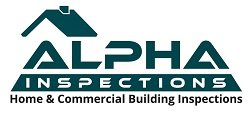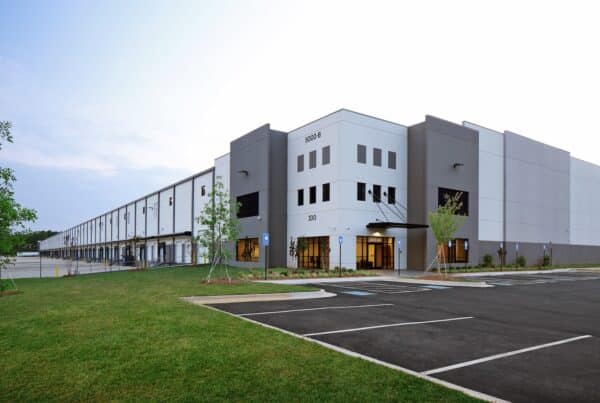
Navigating the realm of homeownership can often feel like learning a new language, and this is especially true when you’re planning renovations or maintenance. Each project, and each piece of your home, has almost an entire dictionary of terms that go with it. Naturally, the roof is no different! So, what exactly is a composition roof?
It’s a common choice among homeowners, prized for affordability, longevity, and aesthetic flexibility. In this article, we’ll be able to get an even clearer idea of composition roofs, their types, benefits, and potential drawbacks.
The Basics of a Composition Roof
Picture your dream home. Now, imagine the roof. Is it durable, cost-effective, and visually pleasing? If so, you might be envisioning a composition roof. A popular choice among homeowners, a composition roof usually consists of asphalt shingles. These consist of an organic or fiberglass base, asphalt, and mineral granules. The name ‘composition’ originates from the composite nature of the materials used.
The appeal of a composition roof lies in its versatility and performance. It comes in various colors, styles, and textures. It can mimic pricey materials like wood or slate but with great durability. It’s a ‘jack of all trades’ in the roofing world, striking a balance between cost-effectiveness, longevity, and visual appeal.

Types of Composition Roofs
While the term ‘composition roof’ generally refers to roofs made primarily of asphalt shingles, not all asphalt shingles are the same. There are several types, each boasting unique characteristics and benefits.
3-Tab Asphalt Shingles
The most basic and economical of the lot, 3-tab asphalt shingles are a favorite among many homeowners. These shingles are named for their design, which includes three individual tabs of equal size. The result is a symmetrical pattern that offers a clean, simple look. While they may lack the dimensional appearance of the other types, their affordability, and variety of color options make them a popular choice for many homes.
Architectural Asphalt Shingles
Also known as dimensional or laminated shingles, architectural asphalt shingles are a step up from 3-tab shingles in terms of cost and performance. These shingles consist of multiple layers of asphalt, which gives them a more substantial and dimensional look. This layered structure not only enhances the aesthetic appeal of your roof but also increases its durability and lifespan. Architectural asphalt shingles are available in a wide range of colors and styles, making them a versatile choice for various home designs.
Premium Asphalt Shingles
At the top of the line are premium asphalt shingles. These high-quality shingles mimic the luxurious look of natural materials like slate or cedar shakes without the high cost or maintenance requirements. Premium asphalt shingles are typically thicker and more durable than the other types, contributing to their longer lifespan. Although they come with a higher price tag, the combination of superior performance and stunning aesthetics can make them a worthwhile investment.
In essence, the type of composition roof that’s best for your home will depend on a variety of factors, including your budget, the architectural style of your home, and your personal preferences. Regardless of the type you choose, rest assured that a composition roof can provide a reliable, aesthetically pleasing, and cost-effective solution.
The Pros and Cons of Composition Roofs
Like any home improvement decision, choosing a composition roof comes with its share of pros and cons. Understanding these can help you make an informed decision about whether it’s the right choice for your home.
Advantages of a Composition Roof
- Affordability: Composition roofs are generally more cost-effective than other types of roofs. On average, you can expect to pay between $3.50 and $5.50 per square foot installed for a composition roof. The price can vary depending on the type of composition shingle (3-tab, architectural, or premium) and the specifics of the installation, such as the complexity of the roof design and the region where you live.
- Variety: With a range of styles, colors, and textures, composition roofs offer remarkable flexibility in terms of aesthetics. They can mimic the look of more expensive materials without the high cost.
- Durability: Composition roofs are known for their resistance to various weather conditions, from rain and wind to fire, to some extent. They can stand up well to the elements, although their durability can be somewhat less than that of some other roofing materials.
- Ease of Installation: Compared to other types of roofs, composition roofs are relatively easy to install, which can also reduce labor costs.
Considerations for a Composition Roof
- Lifespan: While composition roofs are durable, their lifespan can be shorter than some other types of roofing materials. The average lifespan of a composition roof is around 15-30 years, depending on the type of shingle and maintenance. In comparison, metal roofing can last 40-70 years, and slate or tile roofs can last over 100 years. However, these longer-lasting materials also tend to come with a higher upfront cost.
- Environmental Impact: While some types of composition shingles are recyclable, not all of them are. Furthermore, the manufacturing process of asphalt shingles has a significant energy footprint.
- Heat Absorption: Composition roofs, especially darker ones, tend to absorb heat, which can result in higher cooling costs during the summer months. Some manufacturers offer “cool roof” shingles that are designed to reflect more sunlight and absorb less heat.

Recommended Maintenance
Regular maintenance is crucial for the longevity and optimal performance of composition roofs. Annual professional inspections can detect early damage signs, like cracked or missing shingles or moss growth.
Cleaning is also key! Remove debris such as leaves and branches to avoid moisture trap and damage. If moss or algae are present, use a suitable roof-cleaning solution. But avoid power washing – it can harm the shingles.
Any detected damage should be addressed promptly to prevent further issues, with the immediate replacement of cracked or missing shingles helping to avoid water damage to the roof’s underlayers. Lastly, ensuring proper ventilation is crucial for regulating attic temperature and preventing potential damage from heat buildup or condensation.
When to Call a Professional
Homeowners can often conduct regular inspections and basic maintenance tasks. However, certain situations require the attention of a professional roofer. If you notice any of the following, contact a professional:
Severe Shingle Damage
When a large number of shingles crack, curl, or go missing, it’s time to call the experts. This extensive damage could indicate that your roof is nearing the end of its lifespan and you might need to replace it.
Significant Moss or Algae Growth
You can treat a small amount of moss or algae with a roof-cleaning solution. However, a professional should handle extensive growth to avoid damaging the shingles.
Leakage in the Attic
If you notice any signs of water damage in your attic, such as water stains, dampness, or mold, you should immediately contact a professional roofer. This could indicate a leak in your roof, which needs to be addressed promptly.
Sagging Roof
A sagging roof is a serious issue that could indicate structural problems. If you notice any sagging areas on your roof, it’s important to get a professional inspection as soon as possible.
Deterioration Around Roof Objects and Openings
If you notice wear and tear or damage around objects on your roof such as chimneys, pipes, and vents, you should call a professional roofer. These areas are particularly prone to leaks and should be promptly repaired.
And, of course, if you are considering replacing your roof, or have any concerns about its structural integrity, always consult with a licensed roofing professional. They can provide expert advice, perform thorough inspections, and carry out necessary repairs or replacements to ensure the longevity and safety of your roof.
Final Thoughts
Understanding the different aspects of a composition roof, from its construction to its types, benefits, and potential drawbacks, can empower homeowners to make an informed choice. A blend of affordability, durability, and aesthetic versatility, these roofs cater to a variety of needs and preferences.
The choice of a composition roof depends on your personal preferences, budget, and the architectural style of your home. Whichever type you choose, a composition roof promises a balance of cost-effectiveness, resilience, and aesthetic appeal, serving as a reliable shield for your home against the elements. For an inspection of your current roof or guidance on the best type for your needs, reach out to Alpha Building Inspections today!



